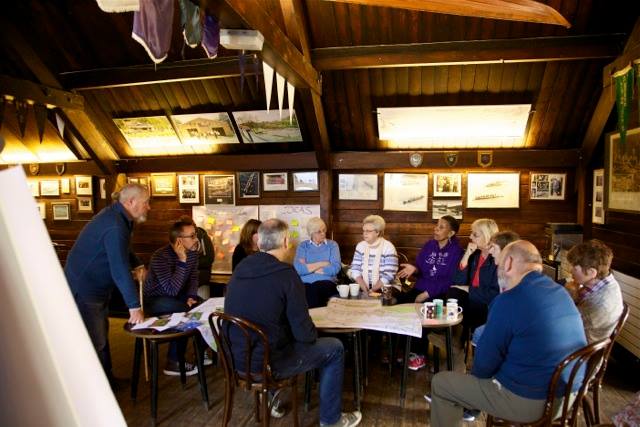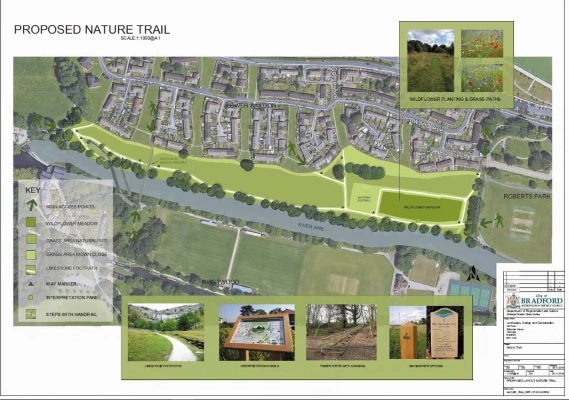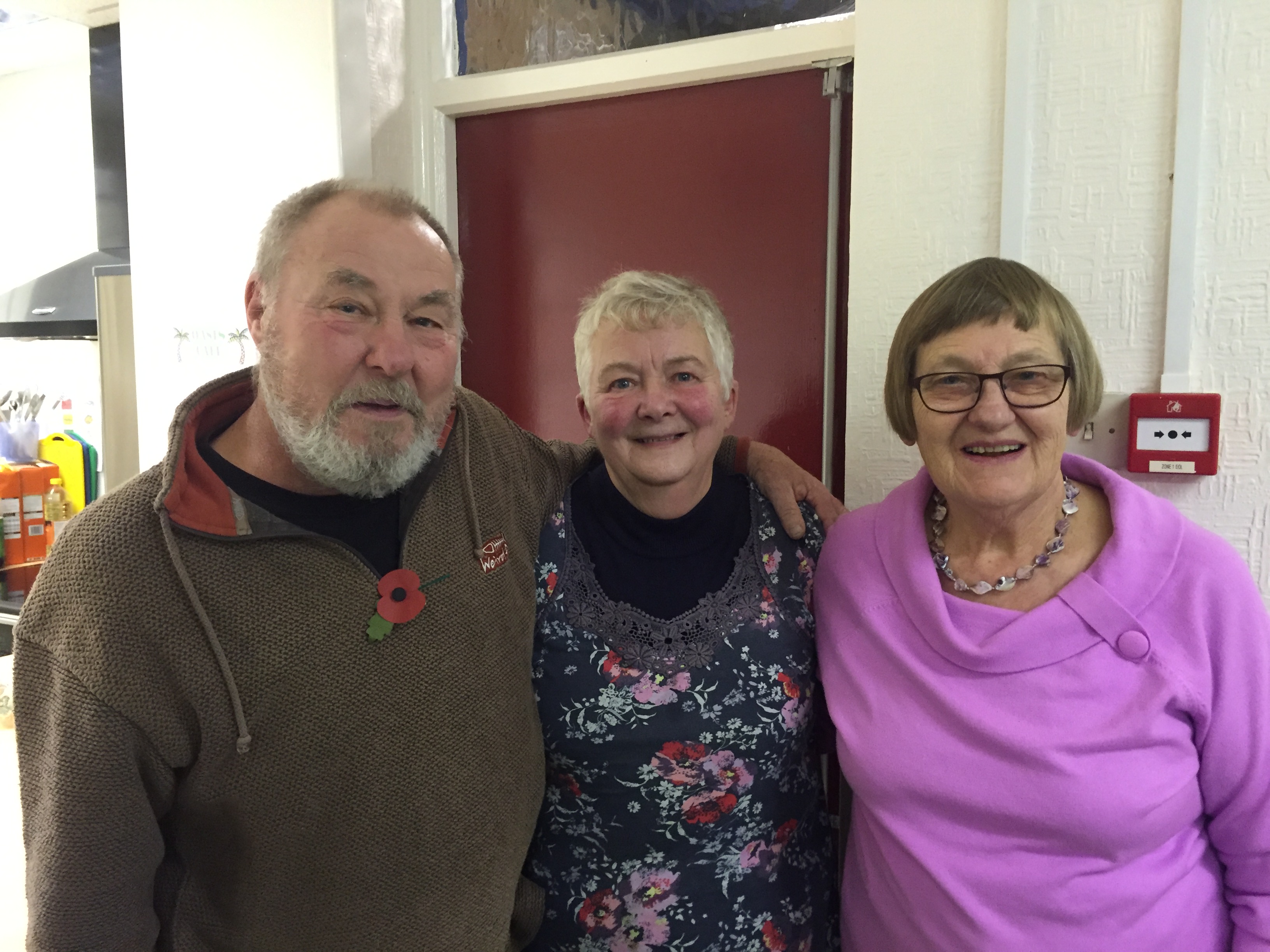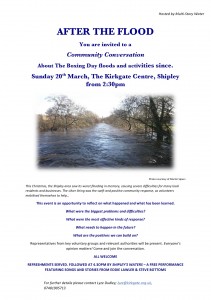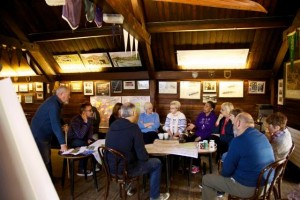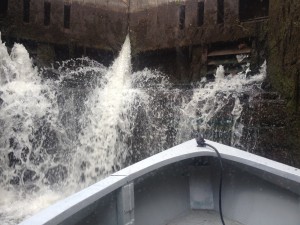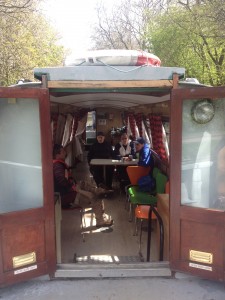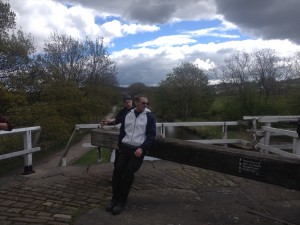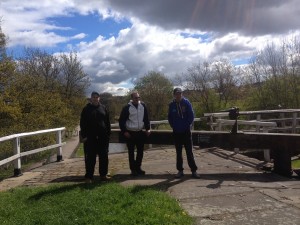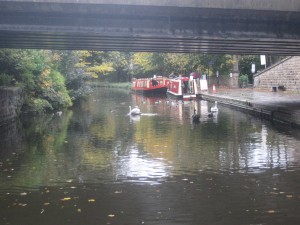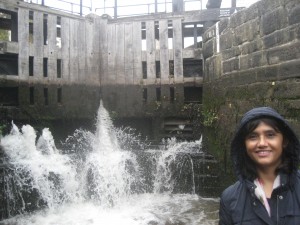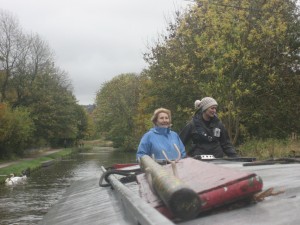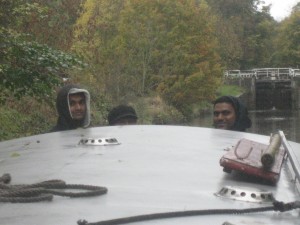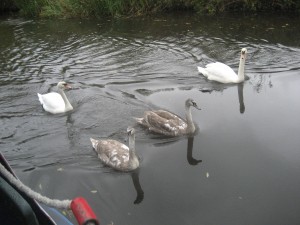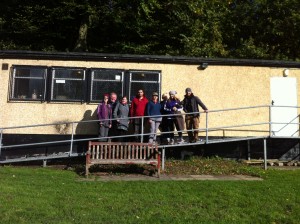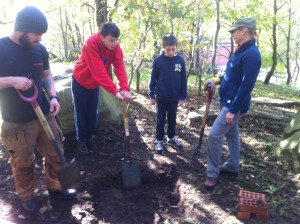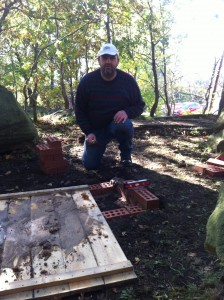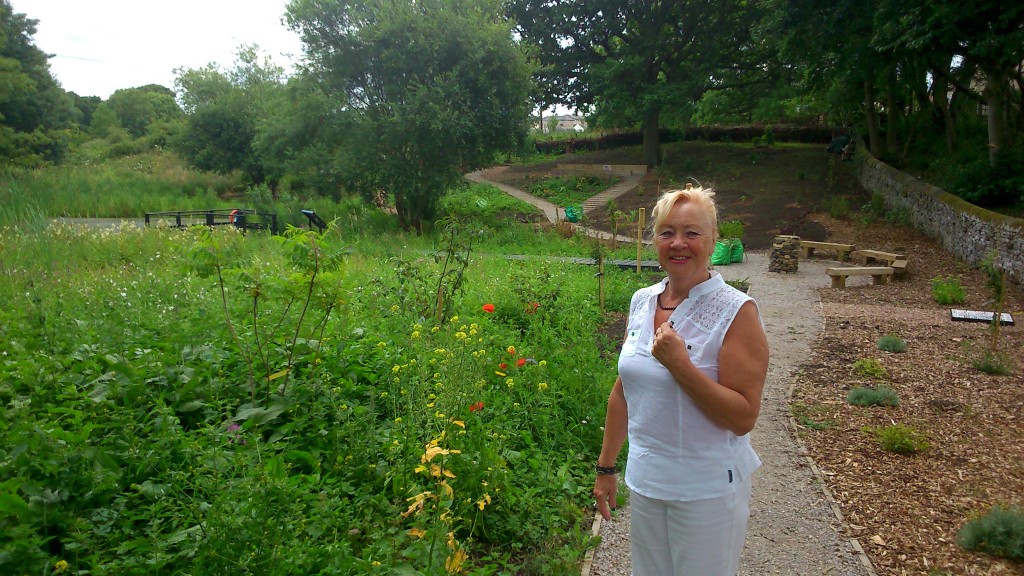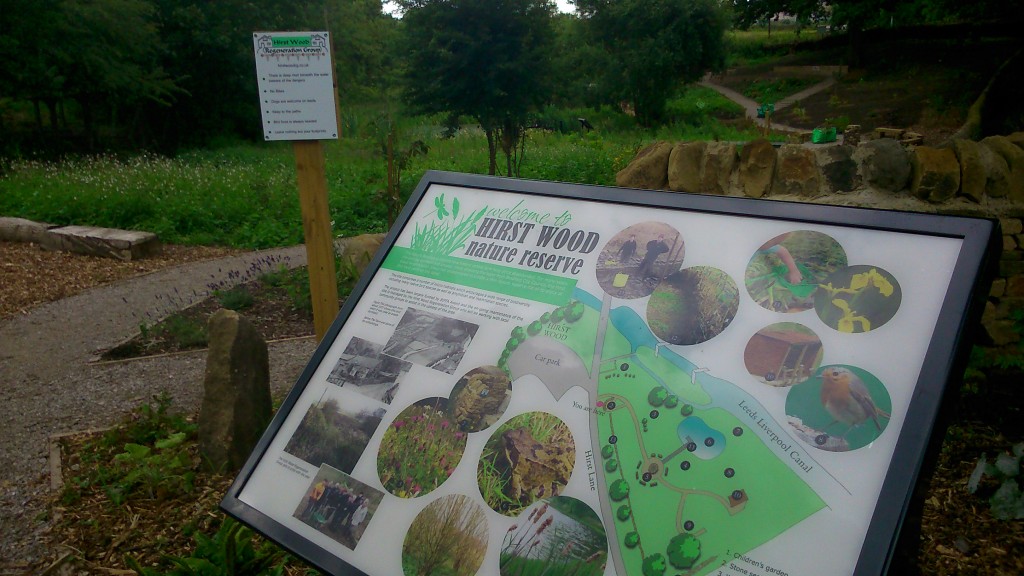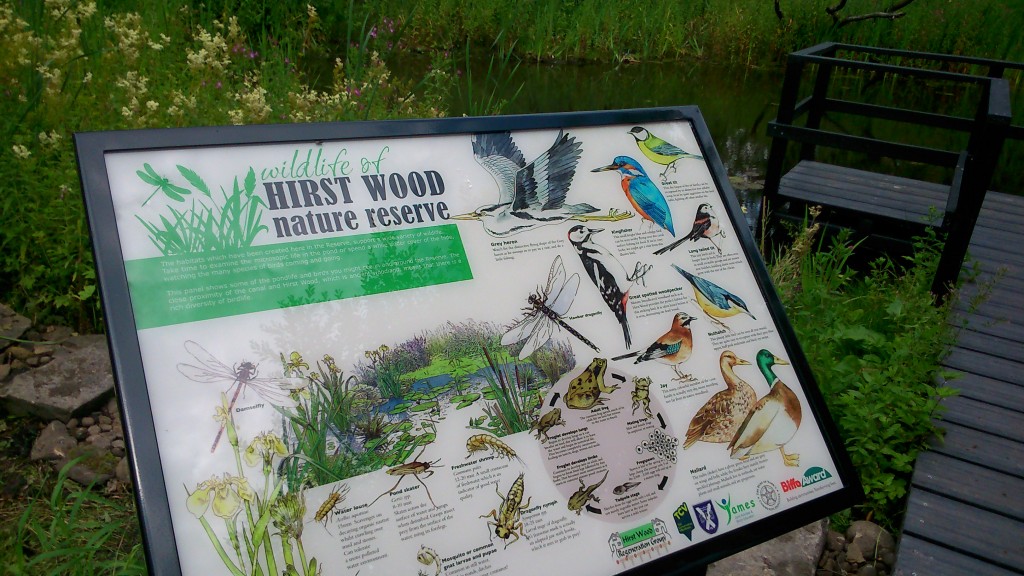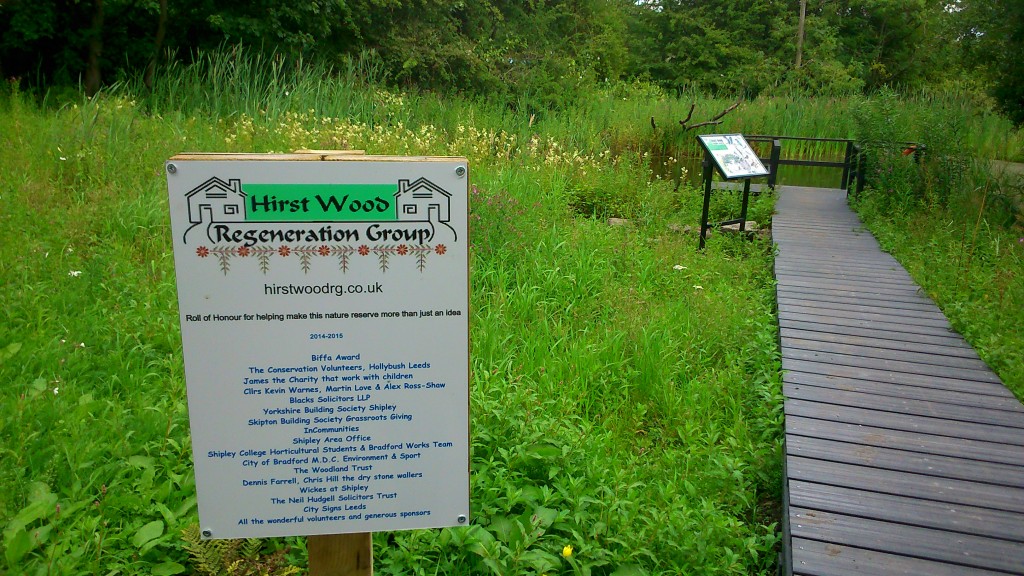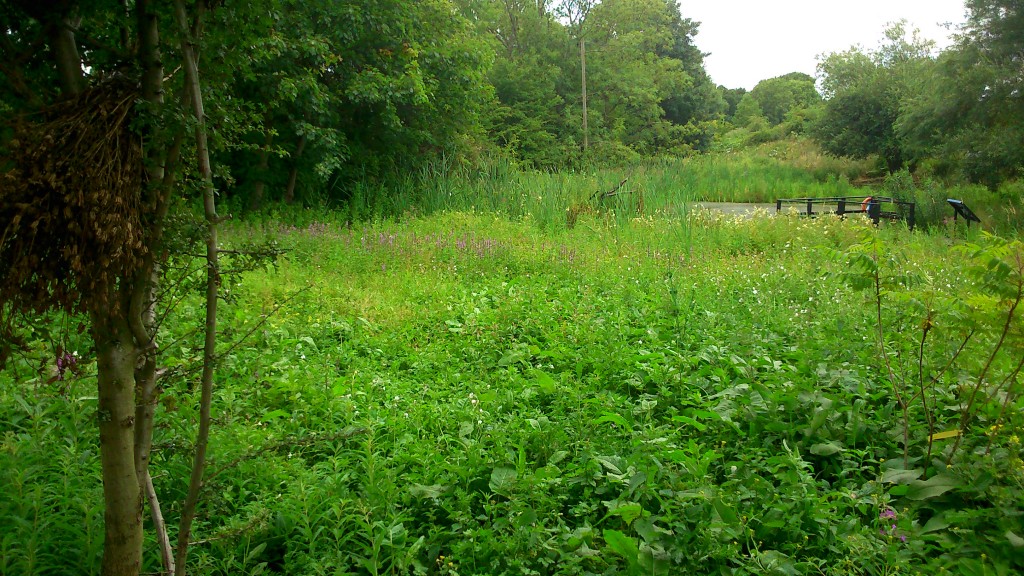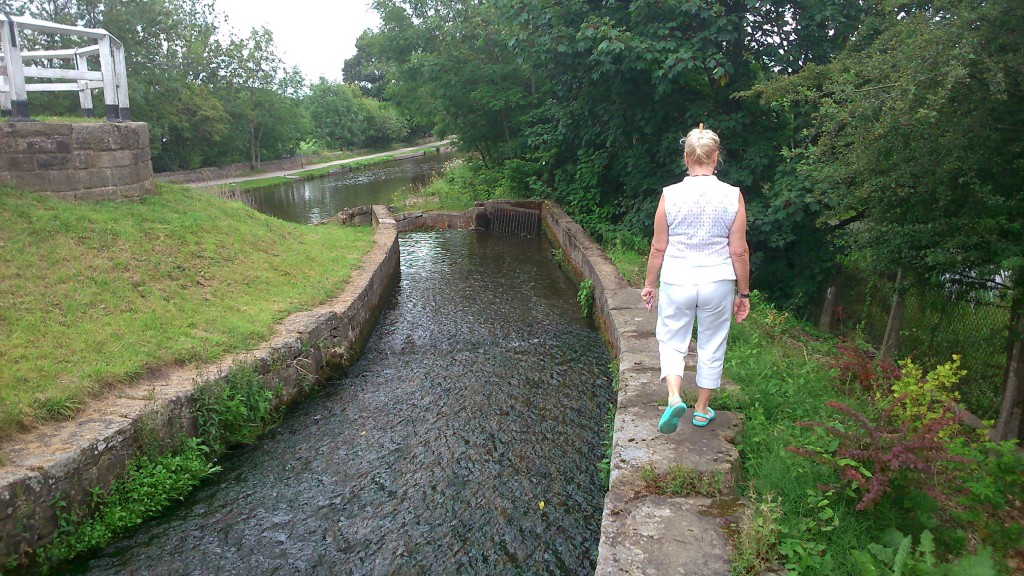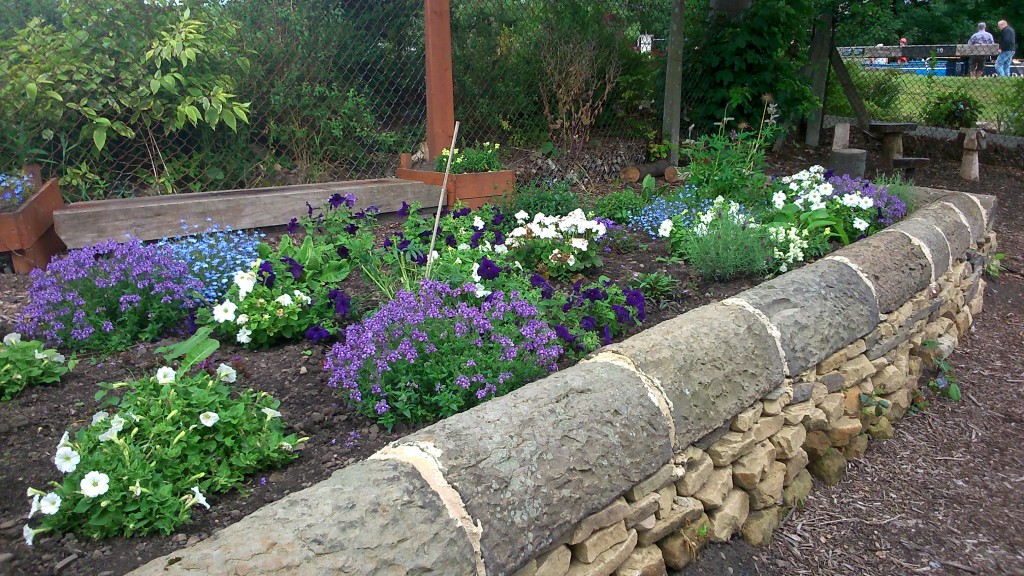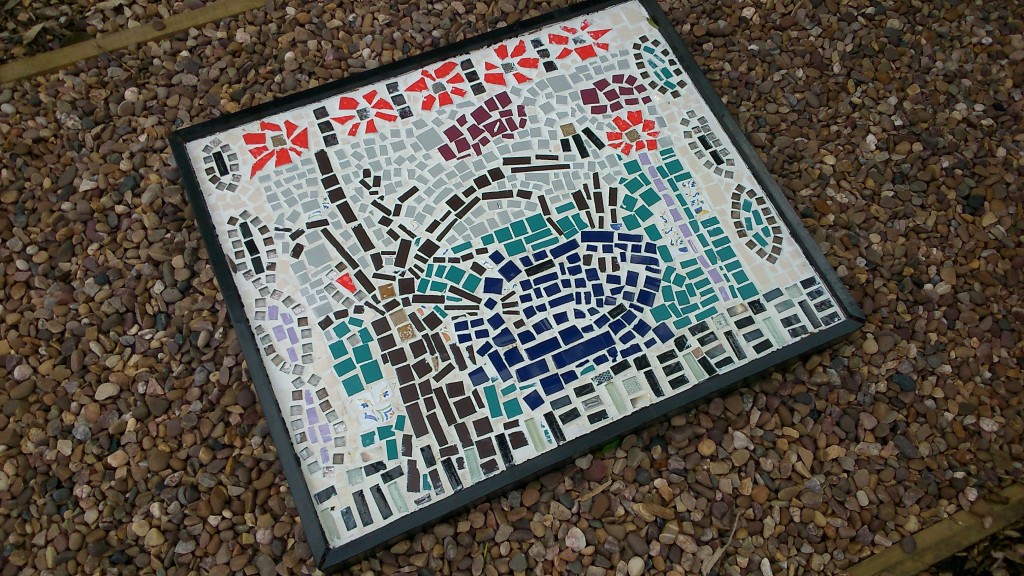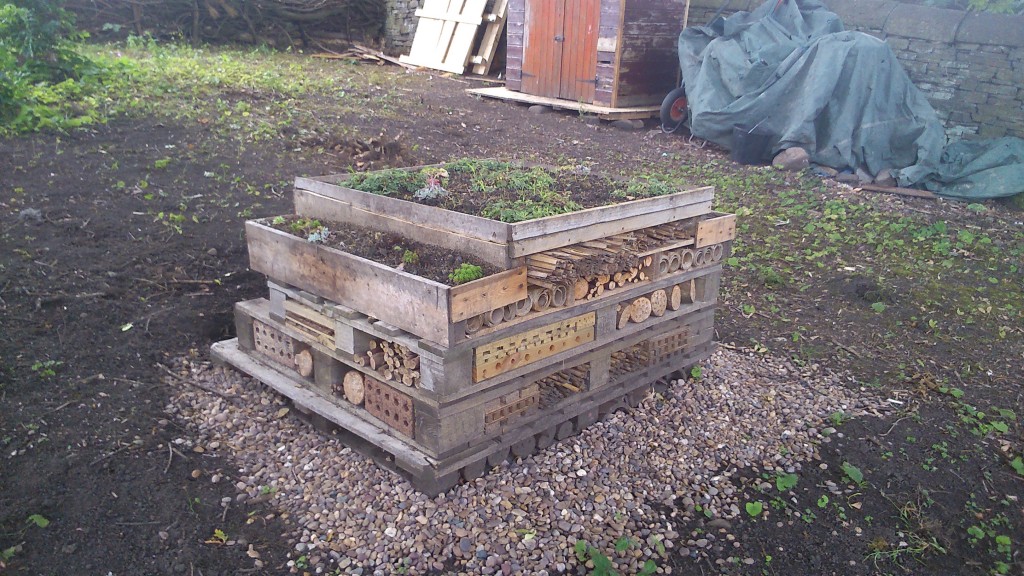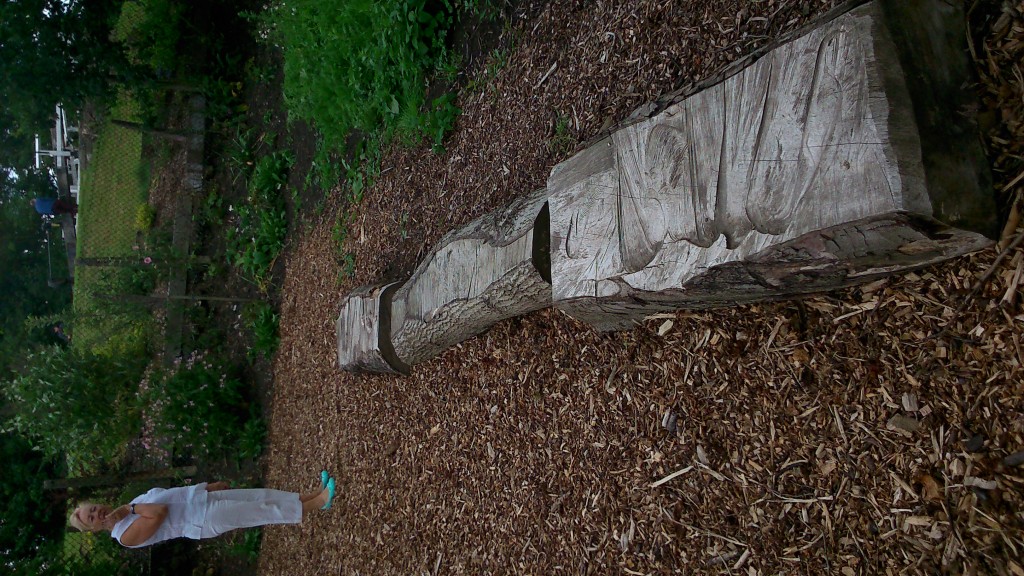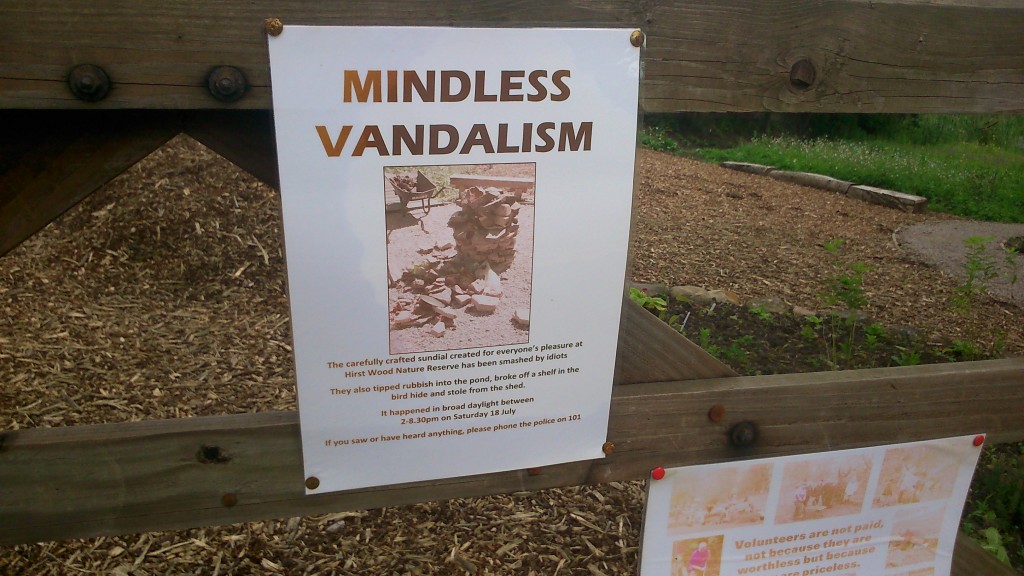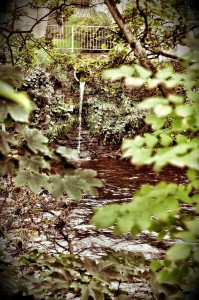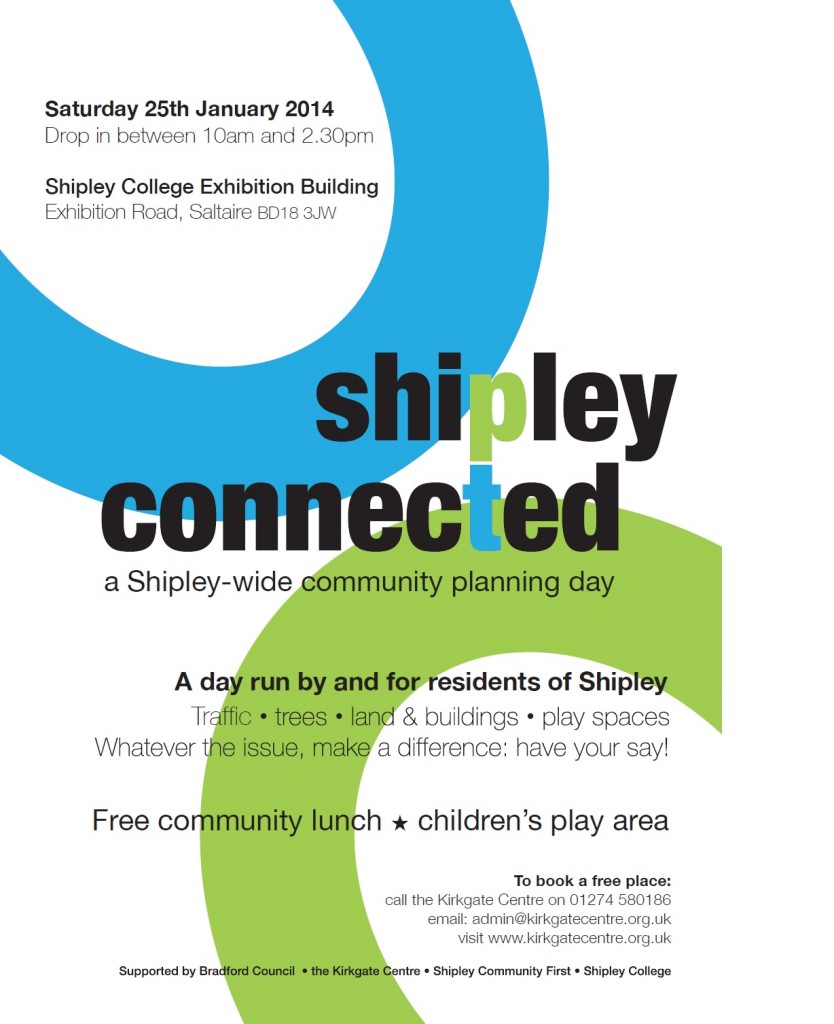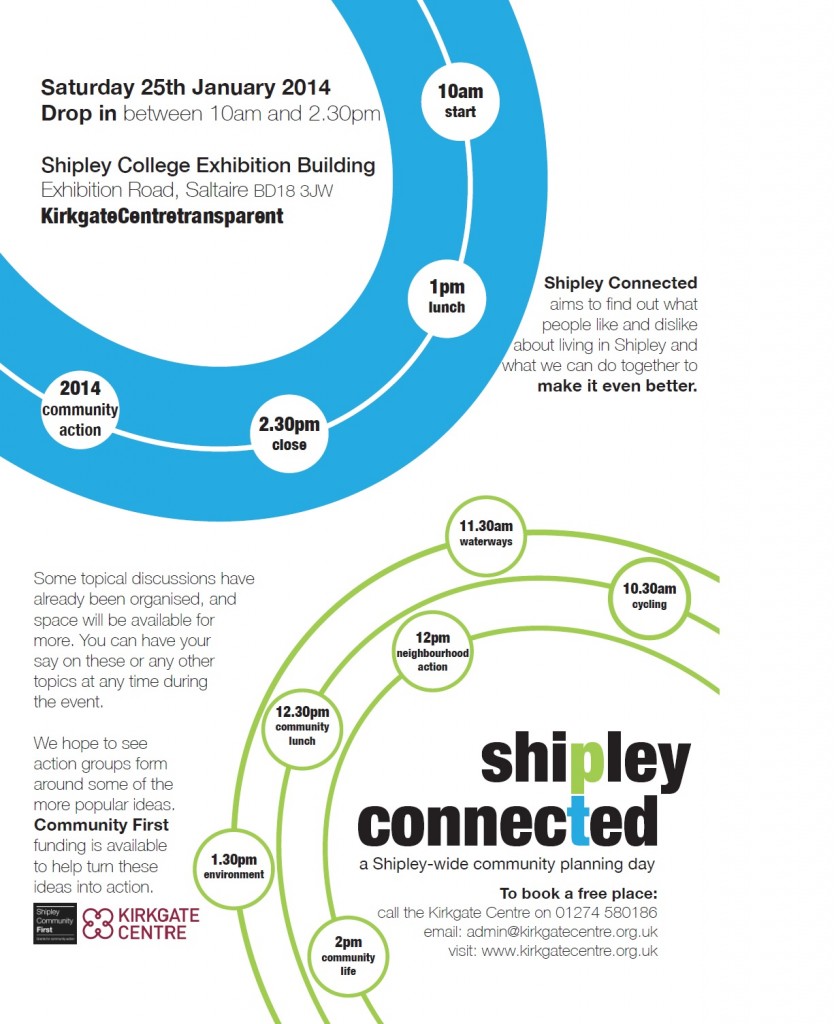 A couple of weeks ago, I visited the Shipley/Saltaire area for the first time in months — and took a walk along the footpath on the left of the picture above, which runs parallel with the River Aire (it’s on the other side of those trees). This is the flood-plain field that separates the river from the Higher Coach Road estate, and my plan that day was to attend the “Great Get Together” organised by the HCR Residents Group. In the end, that got postponed thanks to iffy weather… (see the glowering sky in the picture!) So here’s a shout-out for the rescheduled event, now taking place this coming Saturday…
A couple of weeks ago, I visited the Shipley/Saltaire area for the first time in months — and took a walk along the footpath on the left of the picture above, which runs parallel with the River Aire (it’s on the other side of those trees). This is the flood-plain field that separates the river from the Higher Coach Road estate, and my plan that day was to attend the “Great Get Together” organised by the HCR Residents Group. In the end, that got postponed thanks to iffy weather… (see the glowering sky in the picture!) So here’s a shout-out for the rescheduled event, now taking place this coming Saturday…
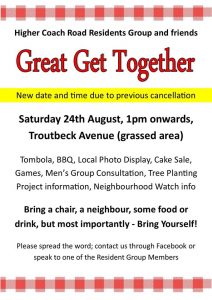
This is one of over 6,000 “get togethers” happening around the country this year, as part of a new tradition established in memory of the murdered MP Jo Cox. The idea is that bringing people together in community and friendship might help overcome some of the divisions that are causing anger and sometimes violence in our society at present…
Actually, that seems to have been a principle of the Higher Coach Road Residents Group ever since it got started in 2015. The residents have many, varied political viewpoints, but they’ve carefully avoided letting those become an obstacle to working together in the interests of everyone in the area. They’ve always found ways to prioritise “getting together” socially, so as to build a sense of community … and then they’ve used that common strength to campaign for improvements to life on the estate. Just look at the wording on the flyer — it’s about being sociable, but then also using that sociability for good effect. And that footpath in the first picture is Exhibit A!
The path may not look like much, at first glance, but until just a few months ago, this riverside walking route was just a track in the grass. It’s now a proper, hardcore path that’s safe and secure in all weathers, thanks to a long campaign by HCR Residents to make it a reality. (I summarised the back-story in this blog post earlier this year, when the path was starting to be installed.) And it’s not just the path… at the end of the estate near Roberts Park there’s also a meadow of wildflowers (pictured above and below), which is another residents’ dream becoming reality. The fenceposts are there to protect this area while it grows in properly, over time, but there’s various colours and species already apparent…
 The riverside path even has a side-track that loops all the way around the wildflower area, so that people can walk around and view it from all sides. I hadn’t expected that!
The riverside path even has a side-track that loops all the way around the wildflower area, so that people can walk around and view it from all sides. I hadn’t expected that!
As part of the same set of developments, a series of benches have also been installed along the paths for walkers to rest on and enjoy the view…
The bench above is beside the main riverside path, and then there’s another one on the side-path that runs north to connect up with the streets of the estate itself… Below is where the path coming away from the river splits in two directions towards Troutbeck Avenue and Windermere Avenue . . . by the tree where HCRRG’s children’s art group often meets.
 All of this is a real benefit for residents, particularly those who are older or less physically mobile, who could not safely get down to the field before. These paths now allow full access for everyone. Still, I’d be lying if I claimed that everyone is now completely happy with the field… For several years now, it’s been a sore point with many residents that Bradford Council’s park service has refused to mow the main part of the field regularly, during the summer months (citing austerity cuts). This still seems to be an issue, despite the other improvements, and here’s the result…
All of this is a real benefit for residents, particularly those who are older or less physically mobile, who could not safely get down to the field before. These paths now allow full access for everyone. Still, I’d be lying if I claimed that everyone is now completely happy with the field… For several years now, it’s been a sore point with many residents that Bradford Council’s park service has refused to mow the main part of the field regularly, during the summer months (citing austerity cuts). This still seems to be an issue, despite the other improvements, and here’s the result…
 Obviously, unlike the planned wildflower section, this is just a bit of a scrubby mess… although birds and insects love it, for sure. The long grass really limits what people can do on the field, although it hasn’t stopped them completely! That shorter-grassed area in the middle of the picture above shows the spot where residents’ bonfires sometimes happen. The spirit of unofficial improvisation with the field has always been an aspect of life on the estate, and hopefully the new improvements won’t change that!
Obviously, unlike the planned wildflower section, this is just a bit of a scrubby mess… although birds and insects love it, for sure. The long grass really limits what people can do on the field, although it hasn’t stopped them completely! That shorter-grassed area in the middle of the picture above shows the spot where residents’ bonfires sometimes happen. The spirit of unofficial improvisation with the field has always been an aspect of life on the estate, and hopefully the new improvements won’t change that!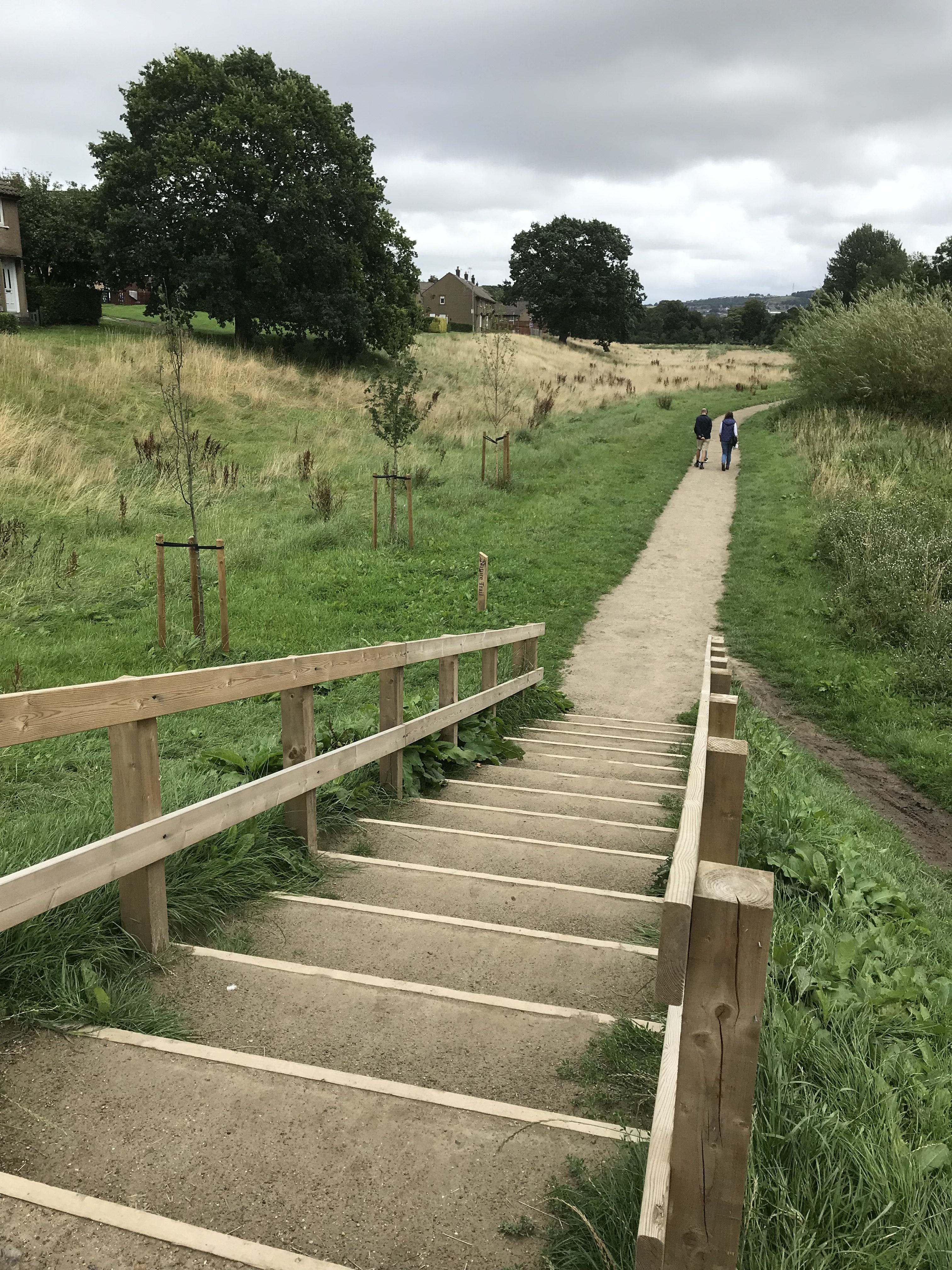
In the picture above, you’re looking east towards Saltaire, with the river the left… The long grass in the field doesn’t look quite so bad from this angle. And these new steps, which were also installed as part of the path scheme, allow safe access up the banking that leads to the footbridge over the river. In the past, climbing up this grassy slope could be pretty treacherous in wet weather – but not now!
Now turn yourself through 180 degrees, and you’re looking west towards Bingley. Here’s the steps back down from the footbridge banking…
 … notice the newly planted trees in this picture (and the one above it), again all part of the landscaping improvements. And also, notice the side path going off the left in this picture, a little way down. This leads walkers to a short tunnel underneath the Barden aqueduct (which we once turned into an impromptu cinema!), and then along a short bit of (new) path right next to the river…
… notice the newly planted trees in this picture (and the one above it), again all part of the landscaping improvements. And also, notice the side path going off the left in this picture, a little way down. This leads walkers to a short tunnel underneath the Barden aqueduct (which we once turned into an impromptu cinema!), and then along a short bit of (new) path right next to the river…
Here, there’s one of several wooden posts that have been staked out along the new path, marked “Nature Trail.” These show where the permanent version will be, of a temporary nature trail that was marked out as one of the first statements of intent by the new residents’ group in 2015. As yet, these new posts don’t yet have interpretation boards mounted on them, but these will presumably follow. I’m sure the group is working on composing these! (Maybe they’ll be discussed at the Great Get Together.)
Here’s the view from the far end of the estate, looking back towards the east. Here, three paths come together — again, none of them existed properly until earlier this year! To the left, there’s a path up towards the homes on Bowland Avenue and the nearby flats… down the middle, the main path towards the footbridge… to the right, the shorter path taking you closer to the river and under the acqueduct. There’s more new tree-planting in this picture — which, by the way, is also something of a flood mitigation measure (provided that enough new planting also happens in other places).
 And finally, here is the River Aire itself, viewed from just a few yards further upstream, near the Rowing Club. The weir was looking pretty stormy that day, after a lot of rain.
And finally, here is the River Aire itself, viewed from just a few yards further upstream, near the Rowing Club. The weir was looking pretty stormy that day, after a lot of rain.
So… many congratulations, again, to the Higher Coach Road Residents Group and Friends, on achieving these important and attractive improvements to the riverside landscape! Enjoy your Get Together this Saturday, and keep up the great work!







